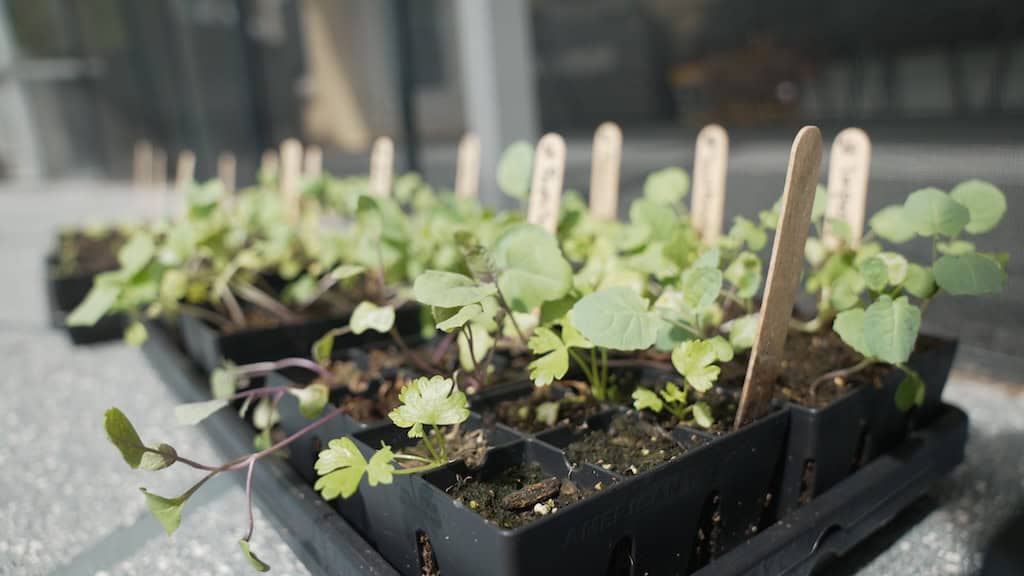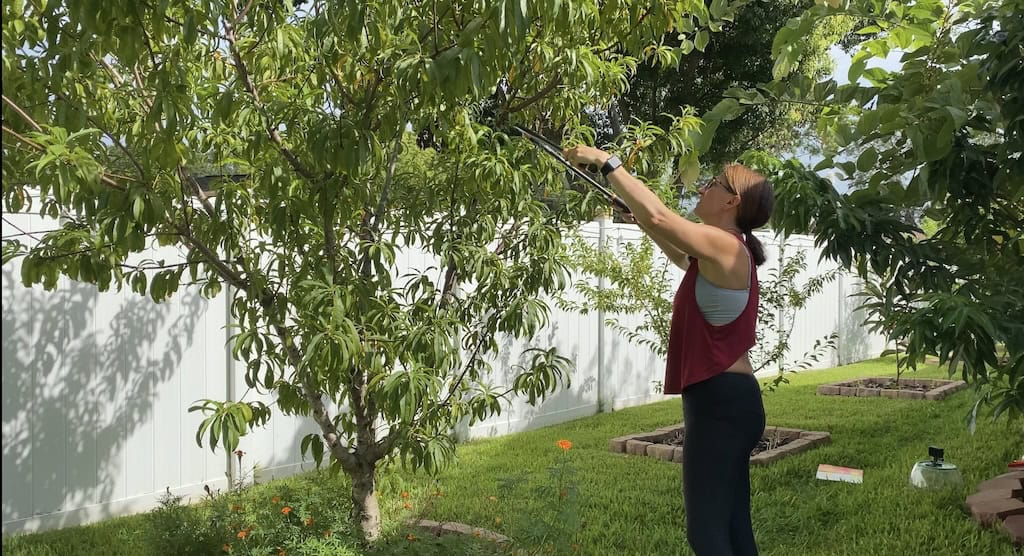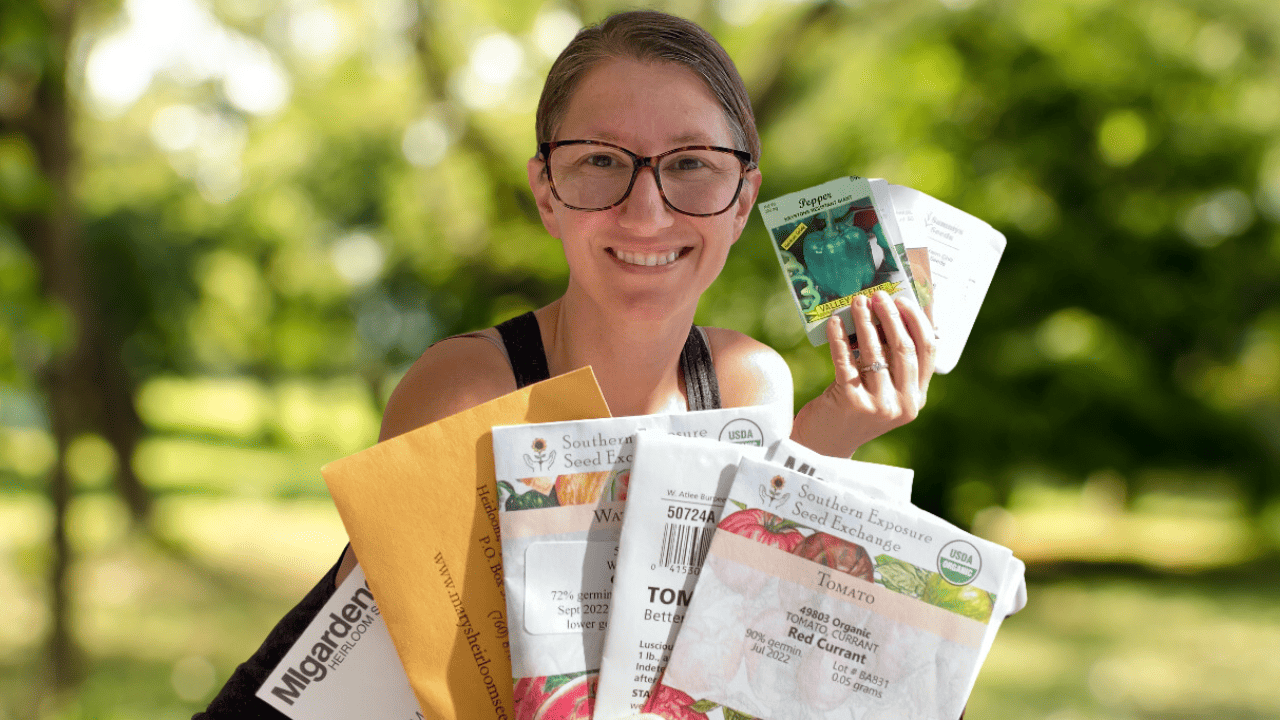Last Updated on January 8, 2025 by Homegrown Florida
Life is unpredictable, and there are plenty of reasons why you might need to step away from your garden for an extended period. Whether it’s a long vacation, the chaos of moving, an illness, or even just the desire to take a break, leaving your garden for an extended period doesn’t have to spell disaster.
Last year, I left my garden for two months during a fall RV trip, and while parts of it thrived, there were plenty of struggles. This year, I took those lessons to heart, made adjustments, and returned to a garden that was not only surviving but thriving.
Here’s a practical guide based on what I’ve learned for anyone looking to leaving your garden for an extended period—or to create a lower-maintenance gardening system in general.
This post may contain affiliate links. Read full disclosure here.
Table of Contents
Why You Might Need to Leave Your Garden
Gardening is rewarding, but sometimes life takes priority:
- Travel and Vacations
- Extended trips, holidays, or even a spontaneous getaway can pull you away from your plants.
- Health Challenges
- Whether it’s recovering from surgery or just needing physical rest, there are times when gardening isn’t possible.
- Busy Life Events
- Relocating, major projects, or family commitments can make tending your garden take a backseat.
- Seasonal Overload
- The holiday season or an especially busy work season can make it hard to keep up with daily garden care.
- Taking a Break
- Sometimes you just need to step back. Gardening can be physically and mentally demanding, and it’s okay to let nature take over while you recharge.
Regardless of your reason, leaving your garden for an extended period doesn’t have to mean coming back to a disaster. With the right preparation, you can still enjoy a thriving, productive garden when you return.
What I Learned About Leaving My Garden
1. Start with the Right Crops

The type of plants you grow plays a huge role in how well your garden handles your absence. Since I left in the fall, I focused on winter crops and long-season plants that wouldn’t mature too early or demand frequent harvesting.
- Long-Season Crops: Broccoli, cauliflower, and peas are great examples of crops that take their time to mature. They also handle cooler weather well and don’t mind a little neglect.
- Heat-Tolerant Greens: Lettuces like Salanova and other heat-tolerant varieties avoided bolting and provided fresh, ready-to-harvest heads when I returned.
- Weed Suppressors: Quick-maturing crops like radishes can help suppress weeds in your garden even if they overgrow while you’re gone.
Choosing plants that align with your absence timeline and season reduces stress and ensures your garden remains productive when leaving your garden for an extended period. My Florida Planting Schedule will give you everything you need to schedule your veggies at the right time of year.
2. Focus on Transplanting Over Direct Seeding

Direct-seeded crops can be tricky if you’re not around to ensure proper germination, watering, and thinning. For this reason, I transplanted most of my crops about two weeks before I left. I started many plants in trays, even if they are normally direct seeded, 4-6 weeks before my planned departure.
For plants that required direct seeding, like radishes and carrots, I seeded them a full month in advance. This gave me time to focus on thinning and ensuring proper growth before I left, reducing their dependency on daily care.
Key Takeaway: Whenever possible, start your plants in Epic Gardening Seed Starting trays and transplant them into your garden when leaving your garden for an extended period. If you must direct seed, give yourself at least a month to establish them before your absence.
3. Set Up a Reliable Watering System

Water is the lifeline of any garden, and consistent hydration is essential when you’re away. I made several improvements to my watering systems this year that made a massive difference:
- Drip Irrigation: In my raised beds, drip irrigation provided targeted watering directly at the base of plants, minimizing evaporation and ensuring deep soil hydration. The drip irrigation lines were connected to a timer to ensure they watered on a regular schedule.
- Self-Watering Systems: For my containers and GreenStalk planters, I used Blumats, a self-watering spike system. Blumats use ceramic cones that slowly dispense water to the soil at a slow and steady pace, keeping plants consistently hydrated while conserving water. They were connected to a reservoir (like a bucket), which I relied on rain to refill. These systems typically will keep the plants watered for up to a month if using a 5 gallon bucket.
- Mulching: A thick layer of mulch around my plants retained moisture, reduced evaporation, and suppressed weeds, cutting down on overall watering needs. I used thick cypress mulch and layered it at least 3 inches.
Tip: Combine drip irrigation or Blumats with heavy mulching for an efficient, low-maintenance watering system that works when leaving your garden for an extended period.
4. Feed the Soil Before You Leave

One of the most important things I learned this year was the value of preparing the soil with slow-releasing nutrients. Since I wouldn’t be around to fertilize, I leaned on a combination of compost, granular fertilizer, and organic mulch to ensure my plants had everything they needed.
- Compost and Granular Fertilizer: Before leaving, I spread a generous layer of compost over my beds and added some extra granular fertilizer. Granular fertilizer is an excellent choice for absences because it slowly releases nutrients over several weeks, keeping plants fed without the need for reapplication.
- Organic Mulch: To support long-term soil health, I mulched heavily with organic materials like wood chips, leaves, grass clippings, and plant debris. These materials not only suppress weeds and retain moisture but also slowly break down, feeding the soil as they decompose.
Why Soil Health Matters:
Healthy soil is the foundation of a resilient garden. By focusing on soil health when leaving your garden for an extended period, you create an environment where plants can thrive even without constant attention or reapplication of fertilizer.
5. Prevent Weeds Before You Leave

Weeds can quickly take over when you’re not around to pull them, but I discovered a few strategies to keep them at bay:
- Thick Mulching: Cover exposed soil with straw, wood chips, or leaves to smother weeds and retain soil moisture. The thicker the better.
- Crop Competition: Overplanting fast-growing crops like radishes or densely planting leafy greens helped outcompete weeds in several areas of my garden. Even if the plants don’t produce well due to the crowding, at least they block the weeds and maintain the soil structure.
Tip: If you can’t mulch an area, consider planting a “cover crop” or densely seeding it with fast-growing plants to reduce weed pressure. Some of my favorite cover crops are beans, peas, sunn hemp, and marigolds.
6. Protect Your Plants from Critters

Critters can wreak havoc on your garden while you’re gone, but a little planning can help reduce the damage:
- Netting and Row Covers: Lightweight covers can protect vulnerable plants from pests like stink bugs and birds.
- Companion Planting: Growing herbs or flowers that deter pests can provide some natural protection. Onions and garlic are also great choices for companion planting.
- Plant Extras: Let’s face it—some losses to critters are inevitable. Planting more than you need ensures you still have plenty to harvest. I plant 2-3 times what I need with the expectation that I will have to share some with wildlife.
7. Harvest Strategically Before You Leave
A big part of my preparation involved harvesting anything close to maturity before I left. Removing ripe fruits and vegetables not only prevents waste but also encourages plants to focus on growth rather than seed production. This will also deter pests since they can be attracted to ripe and rotting food.
For crops like tomatoes, I even harvested those that had just started blushing or were still green, allowing them to ripen indoors while reducing the weight on the plant. This helped prevent damage and stress while I was away.
General Tips for Leaving Your Garden
Here are some overarching strategies that worked well for me:
- Choose Crops That Match Your Timeline: Pick plants with a long growth cycle if you’ll be away for several weeks or months.
- Transplant Over Direct Seed: Transplanted plants are hardier and more established, making them less dependent on frequent care.
- Upgrade Your Watering System: Drip irrigation, Blumats, and self-watering spikes ensure consistent hydration without daily effort.
- Feed the Soil: Add compost, granular fertilizer, and organic mulch before you leave to keep plants nourished and soil healthy.
- Protect Against Pests: Use netting or companion planting to reduce pest damage in your absence.
- Harvest Before You Leave: Don’t let ripe produce go to waste. A thorough harvest before you leave can also help reduce pest pressure.
Final Thoughts: Thriving with a Hands-Off Garden
Leaving your garden for an extended period doesn’t mean it has to fail. Whether it’s for a vacation, a move, or just to take a break, you can set up your garden to thrive in your absence.
Life happens, but that doesn’t mean your garden has to suffer. With the right setup, you can let nature take over and still enjoy a productive, low-maintenance harvest. Happy gardening!



